In which I attempt to catch up on some of the best (and worst) releases which have slipped my scheduling net. Contemporary is one YA’s busiest genres, so I’ll be tackling these through the medium of (relatively) quick reviews. And probably snark.
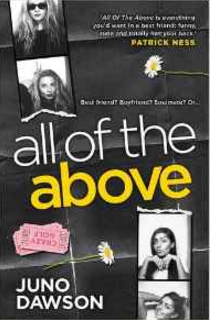 All of the Above by Juno Dawson
All of the Above by Juno Dawson
Publisher: Hot Key Books
Publication date: September 1st 2015
Series or standalone?: standalone
Source: purchased
When sixteen-year-old Toria arrives at a new school, she finds herself caught in a storm of exam pressure, new friends and doubting if she’ll ever fit in. Funny, foul-mouthed Polly – the coolest and weirdest girl Toria’s ever met – and her cohort of fellow outsiders take Toria under their wing, but with loyalties tangled and secrets being kept, fast friendships may hit the rocks even faster. Thrown in Toria’s crush on the irresistible lead singer of a local band set for stardom, and she may find that love and friendship have a funny way of going round in circles…
Eventful, outrageous and biting, All of the Above is practically bursting with character: between artistically talented newcomer Toria, fierce but secretive Daisy, bolshy pack leader Polly, awkward Beasley, book-mad Freya, uber-cool musician Nico, permanently-entwined-and-coolly-disinterested Alex and Alice, and of course, Geoff the cross-dressing squirrel, readers are from the off confronted with a colourful cast of teenagers – and the knowledge that some of these friendships will not survive the book. Polly, Daisy and Nico were the stars of the ensemble for me, but the story itself is championed by heroine Toria.
Chatty, frank and uproariously funny, Toria’s narration was one of my favourite things about the book. Brutally honest and littered with pop culture references, it both keeps you reading and packs a punch. Toria’s experiences as a biracial British-Punjabi teenager only occasionally influence the plot but inform her forthright (“Brompton-on-Sea isn’t exactly a cultural melting pot”) and warmly wry (“Worst. Hindu. Ever”) voice. It is through Toria’s humour and Dawson captures the chaos of teenage experience.
Arriving at Brompton Cliffs, Toria finds that the year which follows is one torrid whirlwind of sexual confusion, startling revelations and surprisingly bittersweet heartbreak. Relying on the base ingredients of the YA tradition – opening with an arrival in a new place, focusing on friendship drama and coming-of-age issues – Dawson adds few twists to the general formula, but packs the book with themes relevant to modern audiences: mental health, sexuality, alcoholism, break-ups, make-ups, strained family relationships, music, hormones.
There’s so much going on in this book. It’s like an episode of Hollyoaks, only better written. This style does have its drawbacks, however. There are moments where the book fails to charm and where plot gets lost in the muddle. The prose is so busy rushing around that it’s difficult to feel many of the tough subjects tackled have been explored as deeply as needed (it’s not an easy read for some issues and requires a trigger warning) or to imagine some of the central relationships, built as they are on hastily-constructed speed-paint foundations, will last beyond the pages.

Fans of Alice Oseman’s Radio Silence, Liz Kessler’s Read Me Like A Book and Lisa Williamson’s All About Mia will find this lively, if occasionally overbusy, contemporary companion appeals. Funny, sharp, and distinctive.
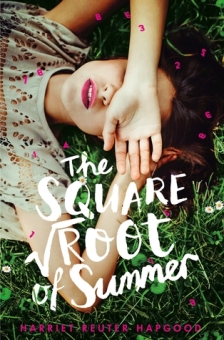 The Square Root of Summer by Harriet Reuter-Hapgood
The Square Root of Summer by Harriet Reuter-Hapgood
Publisher: Macmillan
Publication date: May 5th 2016
Series or standalone?: standalone
Source: ARC
Reeling from the twin heartbreaks of a summer ago – the loss of her grandfather and a tough break-up – Gottie is lost and busy burying herself in equations.
Until Thomas comes home: former boy next door, former best friend, former everything. And until Gottie starts to experience strange blips in time. They take her back to last summer – back to all she should have seen then – where she must navigate grief, world-stopping kisses and the space-time continuum as she tries to reconcile her first heartbreak with her last.
The Square Root of Summer had plenty of potential and no small amount of pre-publication hype. The premise is a collection of things which regularly appear in YA – summer timeframe, tough break-up, bad ex-boyfriend, the boy next door, a struggle with loss – with the added complication of mathematics-laden time travel. Its contemporary framing has echoes of Emery Lord, Amy Zhang and Kasie West, but for me the rest of the book didn’t click.
Unfortunately, the book’s writing style is baffling. And I say this as someone who is all for unusual and striking contemporaries! One moment it’s classic contemporary, the next it’s confused, clunky and completely unenjoyable. Choppy prose weighed down by jargon made it difficult to invest in Gottie’s time travel adventures or the passion for science which litter the novel. The writing style is idiosyncratic, disjointed and jarring, with irritatingly short paragraphs and sentences – all admirable attempts at toying with convention, and perhaps they would’ve worked in the hands of a more skilled or experienced storyteller, but it just doesn’t work here.
This book is, for want of a better phrase, all over the place. The suspension of disbelief, not to mention the supposed romances on which so much of the book hinged, just wasn’t persuasive. The characters are forgettable, the pacing is uneven and the plot is submerged in inexplicable jumps from scene to scene. For a character-driven novel, the individual or intersecting emotional stories must be compelling, but here it’s like someone threw vaguely-contemporary-shaped spaghetti at a wall and decided to write a book out of what stuck. IT MAKES NO SENSE.

I just didn’t enjoy this one. A summer read which fails to live up to its potential. If you’re looking for an unusual writing style in contemporary, expert hands like Sarah Crossan or Jenny Valentine are still your best bet.


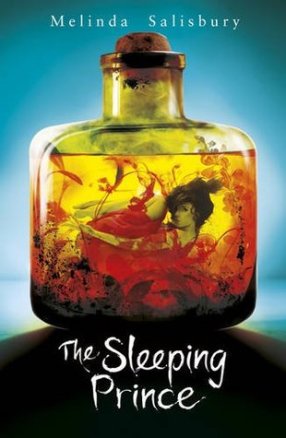 Author(s): Melinda Salisbury
Author(s): Melinda Salisbury
 Author(s): Sophia Bennett
Author(s): Sophia Bennett


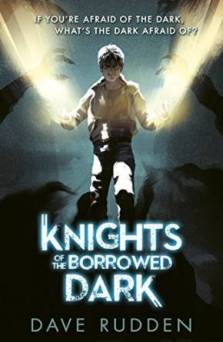 If you liked
If you liked 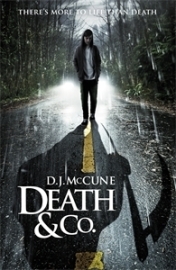 For generations, Adam’s family have been tasked with guiding the newly deceased into the afterlife. It’s a role his brothers are happy to fulfill. They, like their father Nathaniel, feel a sense of responsibility in bringing peace to the departed. Adam, on the other hand, would rather be at school with his friends than upholding a supernatural duty and has trouble even keeping his breakfast down when faced with the prospect of coaxing souls into the light. But the Lumen rules are clear: follow in the family footsteps, or consider yourself no longer a part of the family at all. A page-turning urban fantasy from Hot Key Books.
For generations, Adam’s family have been tasked with guiding the newly deceased into the afterlife. It’s a role his brothers are happy to fulfill. They, like their father Nathaniel, feel a sense of responsibility in bringing peace to the departed. Adam, on the other hand, would rather be at school with his friends than upholding a supernatural duty and has trouble even keeping his breakfast down when faced with the prospect of coaxing souls into the light. But the Lumen rules are clear: follow in the family footsteps, or consider yourself no longer a part of the family at all. A page-turning urban fantasy from Hot Key Books.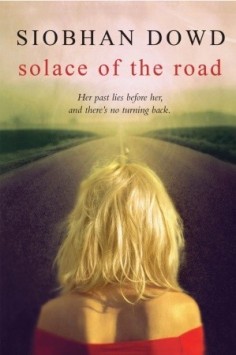 If you liked Louise O’Neill’s Asking For It or Only Ever Yours (two hard-hitting, headline-grabbing titles which tackle tough topics and have female leads), you’ll like…
If you liked Louise O’Neill’s Asking For It or Only Ever Yours (two hard-hitting, headline-grabbing titles which tackle tough topics and have female leads), you’ll like…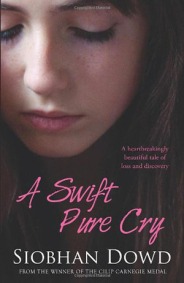 er way back to Ireland, where she hopes her mother will be.
er way back to Ireland, where she hopes her mother will be.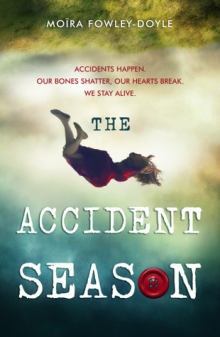 If you liked Moïra Fowley-Doyle’s The Accident Season (a spellbinding, shimmering story full of strange magic, evocative prose and characters who keep secrets even from themselves – I’ve also reviewed
If you liked Moïra Fowley-Doyle’s The Accident Season (a spellbinding, shimmering story full of strange magic, evocative prose and characters who keep secrets even from themselves – I’ve also reviewed 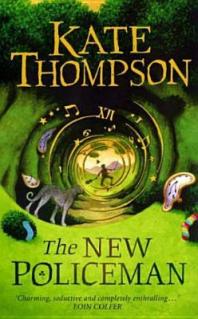 A welcome exception to the usual so-bleak-you’ll-need-ice-cream-and-a-Netflix-binge-to-recover rule.
A welcome exception to the usual so-bleak-you’ll-need-ice-cream-and-a-Netflix-binge-to-recover rule. 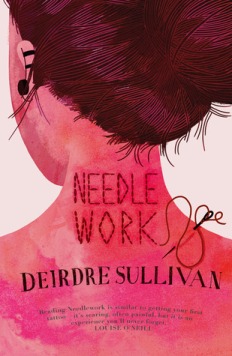 If you liked Needlework by Deirdre Sullivan (a searingly written, visceral take on a tough subject narrated by sharp-tongued, angry teenager Ces, who longs to be a tattoo artist), you’ll like…
If you liked Needlework by Deirdre Sullivan (a searingly written, visceral take on a tough subject narrated by sharp-tongued, angry teenager Ces, who longs to be a tattoo artist), you’ll like…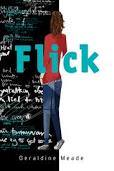
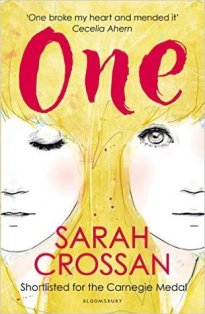 If you liked One by Sarah Crossan (a heartbreaking, bittersweet, award-laden verse novel about sisterhood, friendship and loss from one of the most elegant voices in YA verse fiction), you’ll like…
If you liked One by Sarah Crossan (a heartbreaking, bittersweet, award-laden verse novel about sisterhood, friendship and loss from one of the most elegant voices in YA verse fiction), you’ll like…

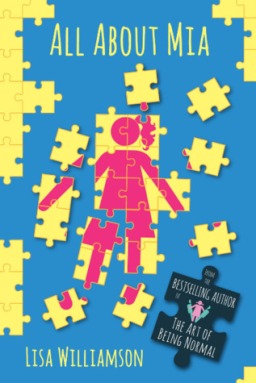 Author(s): Lisa Williamson
Author(s): Lisa Williamson

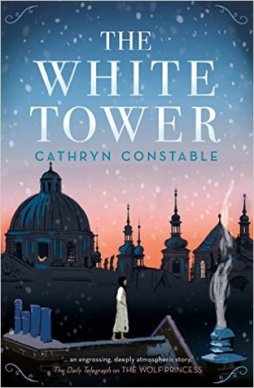 Author(s): Cathryn Constable
Author(s): Cathryn Constable
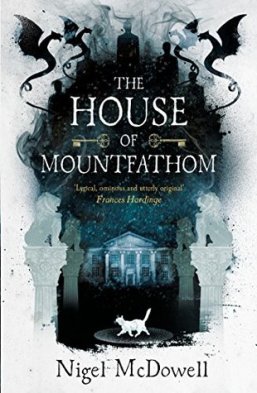 Author(s): Nigel McDowell
Author(s): Nigel McDowell
